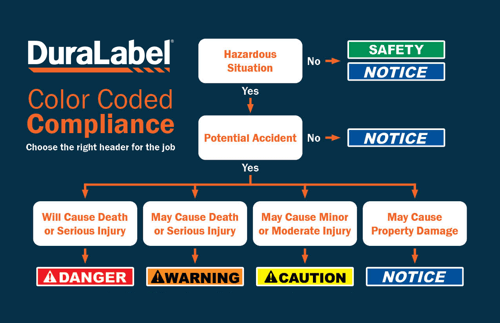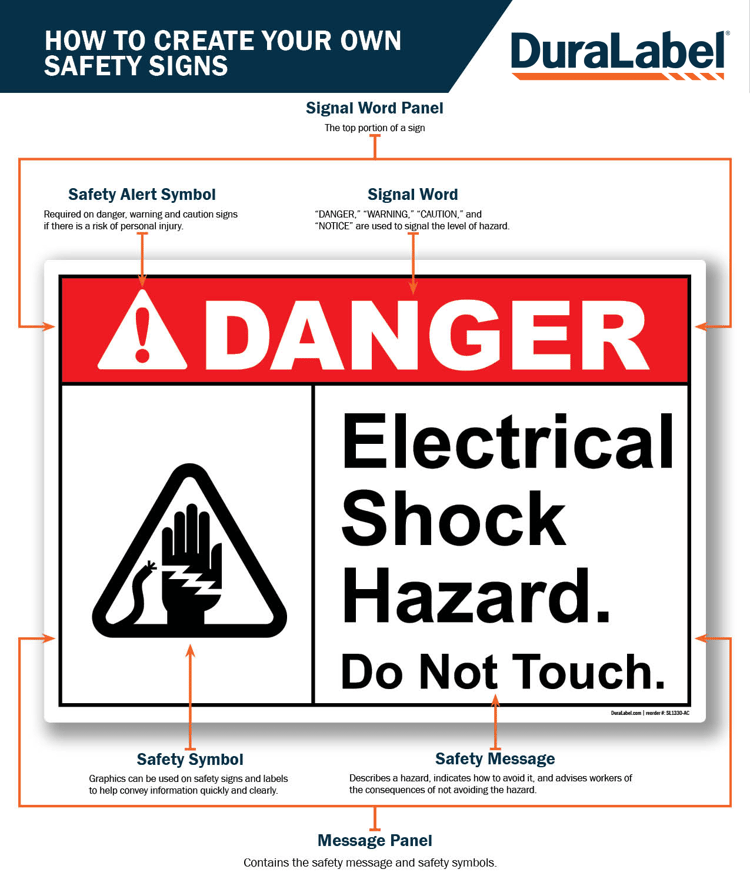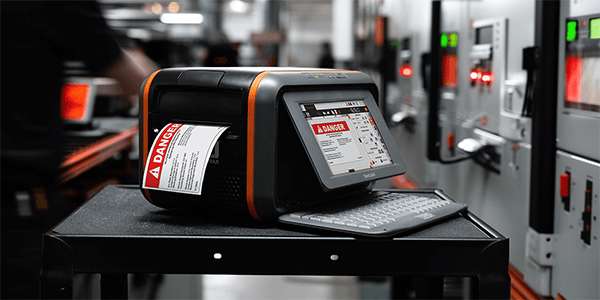OSHA Safety Labels That Meet Compliance Standards

What are the Benefits of Creating OSHA Compliant Signs and Labels?
Occupational Safety and Health Administration (OSHA) compliant safety signs starts with the right structure. Use the correct signal words, matching color code, and a message that states the hazard and required action clearly. Then place the sign where workers reach the decision point. Finally, choose materials that stay legible in your environment, so the warning remains compliant over time.
The sections below break down what OSHA requires and how to apply those rules in real facilities.
-
Which OSHA standards apply to safety signs
-
How signal words and color codes work together
-
What placement rules matter for visibility
-
How durability affects ongoing compliance
-
Best practices that prevent common sign failures
Creating compliant Occupational Safety and Health Administration (OSHA) safety signs is a crucial element in fostering a safe and secure work environment for all. These signs, mandated by OSHA, serve as silent sentinels that provide essential guidance and warnings to safeguard against potential hazards and mitigate workplace accidents.OSHA's standards, such as 1910.145 for general industry, outline requirements for signal words, color codes, and sign placement. Each element—from the color of the sign to its visibility and wording—serves a purpose in quickly conveying information to anyone who encounters it.
OSHA Signs Best Practices for Effective Safety Labels
Here are a few best practices for creating these OSHA signs to ensure their effectiveness:
 Identify all hazards: The initial step in this process is a comprehensive hazard assessment. By scrutinizing your workplace, you unearth hidden dangers, enabling the crafting of signs tailored to specific risks. Identifying these hazards is akin to mapping out potential danger zones on the road to workplace safety.
Identify all hazards: The initial step in this process is a comprehensive hazard assessment. By scrutinizing your workplace, you unearth hidden dangers, enabling the crafting of signs tailored to specific risks. Identifying these hazards is akin to mapping out potential danger zones on the road to workplace safety.- Select or design appropriate safety signs and tags: Armed with a clear understanding of hazards, you can proceed to the next phase: choosing or customizing OSHA signs and labels. Just like selecting the right tools for the job. Sometimes, off-the-shelf signs may suffice, but custom designs are often necessary to address unique hazards and operational contexts.
- Ensure proper wording, graphics, and colors: A well-constructed safety sign is more than just words and symbols; it's a precise communication tool. These OSHA safety labels must contain specific elements such as signal words (e.g., "Danger," "Caution"), consistent color codes (e.g., red for fire-related hazards), appropriate language, and legible fonts in order to meet OSHA labeling requirements. This uniformity in design ensures that the message is clear and readily comprehensible.
 Position signs carefully: Much like strategically placed road signs guide drivers, safety signs should be strategically positioned throughout the workplace. These signs should not only be visible but also intuitively located to convey their message effectively. Proper placement ensures that employees and visitors can quickly recognize and respond to potential dangers.
Position signs carefully: Much like strategically placed road signs guide drivers, safety signs should be strategically positioned throughout the workplace. These signs should not only be visible but also intuitively located to convey their message effectively. Proper placement ensures that employees and visitors can quickly recognize and respond to potential dangers.- Use ANSI symbols: While not mandated by OSHA, incorporating ANSI (American National Standards Institute) symbols can enhance safety sign comprehension. These symbols serve as a universal language, transcending language barriers and aiding untrained individuals in grasping the sign's message swiftly.
- Ensure compliance: Compliance with OSHA's safety sign regulations is not just a legal obligation but a moral commitment to employee well-being. It sets a baseline for safety practices, ensuring that the most fundamental safety precautions are in place. It's imperative to stay abreast of evolving regulations to maintain a safe working environment to ensure you constantly meet OSHA labeling requirements.
OSHA Signs and Visual Safety Communication Resources from DuraLabel
Utilize DuraLabel's OSHA Safety Signs Best Practice Guide to create safety signs that not only meet OSHA standards, but also serve as powerful tools for safeguarding the health and welfare of your employees. These signs are quietly overseeing your workplace, and consistently reinforcing the significance of safety. Luckily, these detailed signs can easily be handled by the DuraLabel Kodiak Max Industrial Sign and Label Print System.
Want to learn how to implement 5s with all of your industrial label needs? Download a free copy of the 5S Quick Start Guide. Give us a call today at 1-888-788-9855 and one of our experts will guide you through the process.
Read Next:
Five ways to Meet OSHA Requirements for Safety Signage
Related Resources

Top 10 Uses for DuraLabel Industrial Label Printers
How DuraLabel Printers are Used Across 10 Key Industrial Applications DuraLabel printers are built to solve ...
Read
Industrial Safety Labels | Label Signage | Sign Label
The accurate interpretation of safety signs is crucial to prevent injuries and save lives. OSHA has set ...
Read
Job Safety Analysis
A Job Safety Analysis (JSA) is a risk assessment tool used to identify job-related hazards. The Job Safety ...
Read.png)





